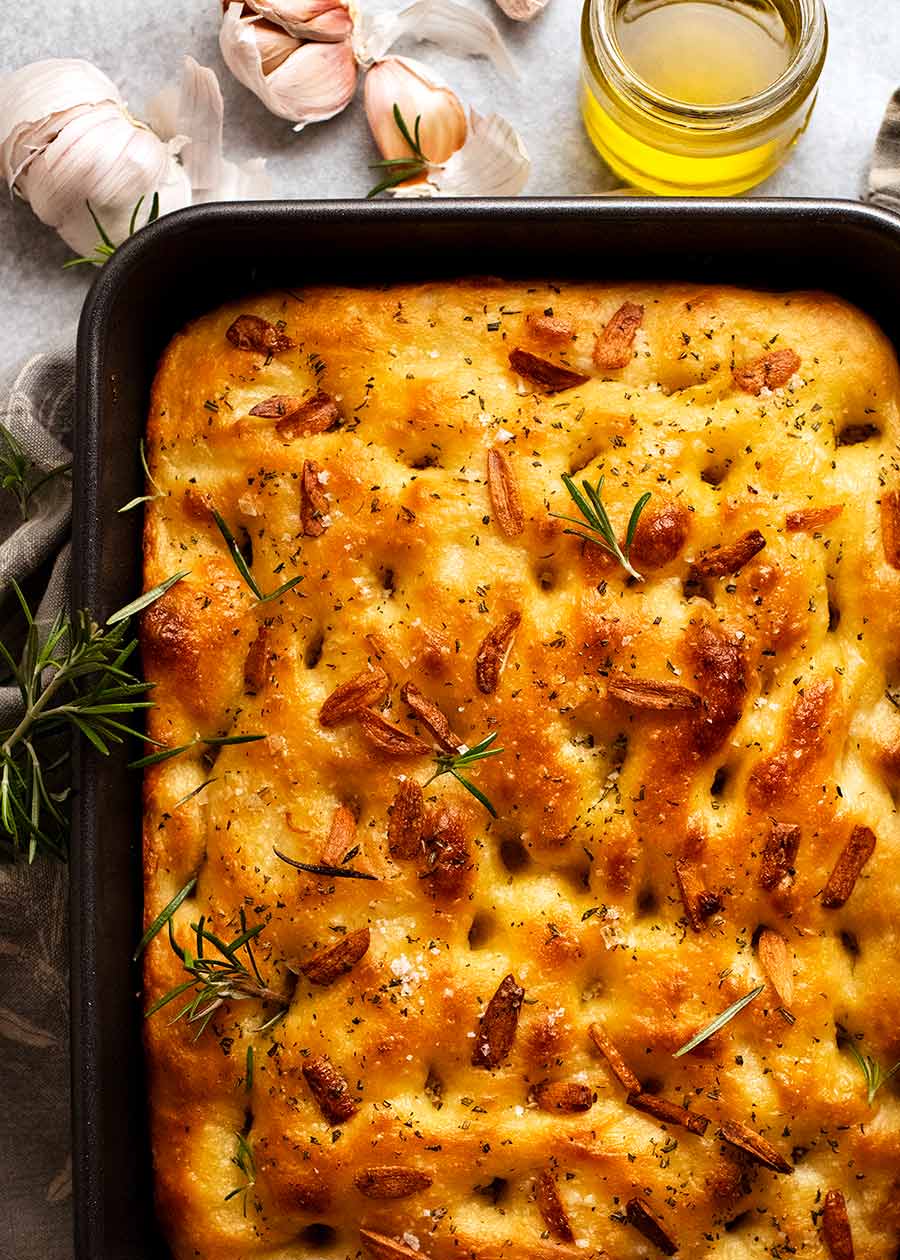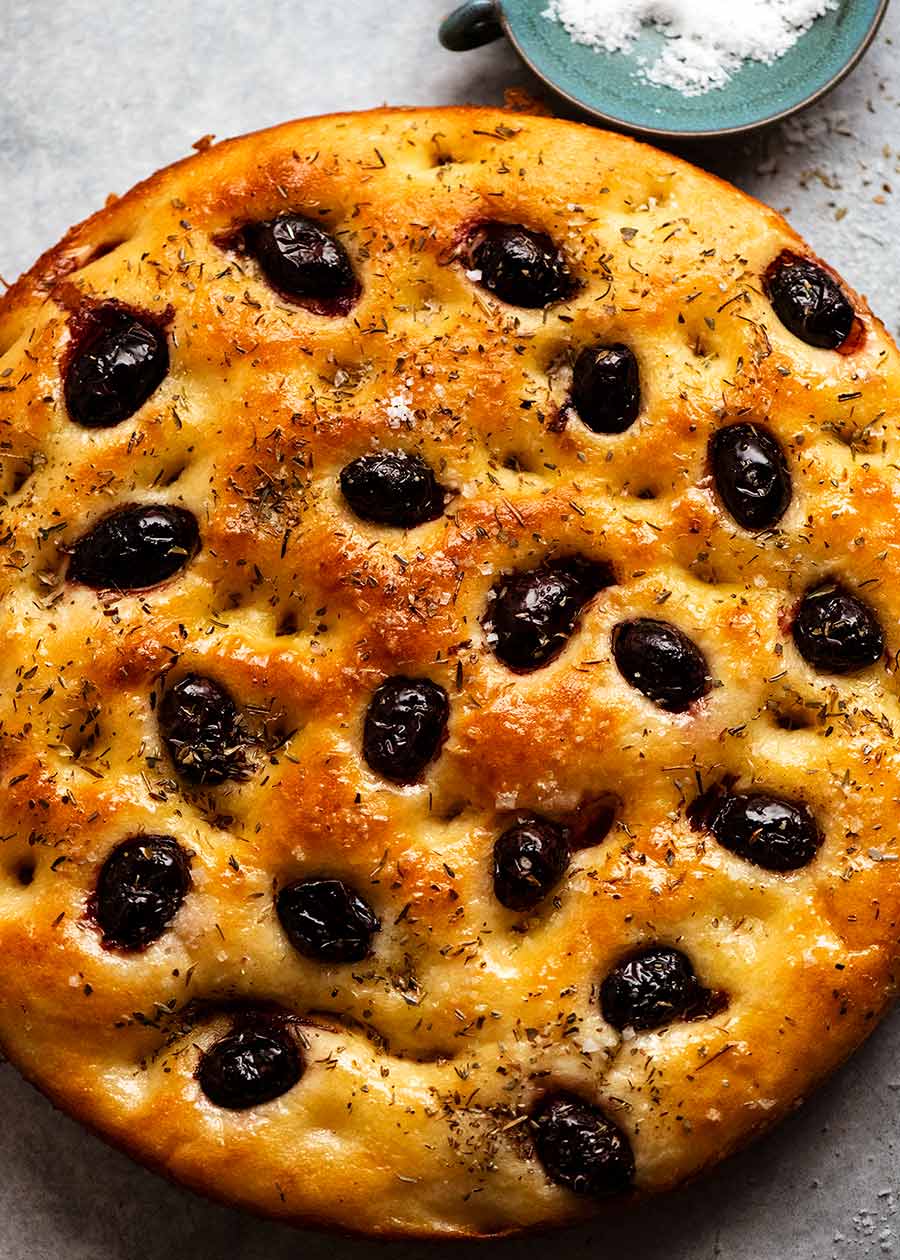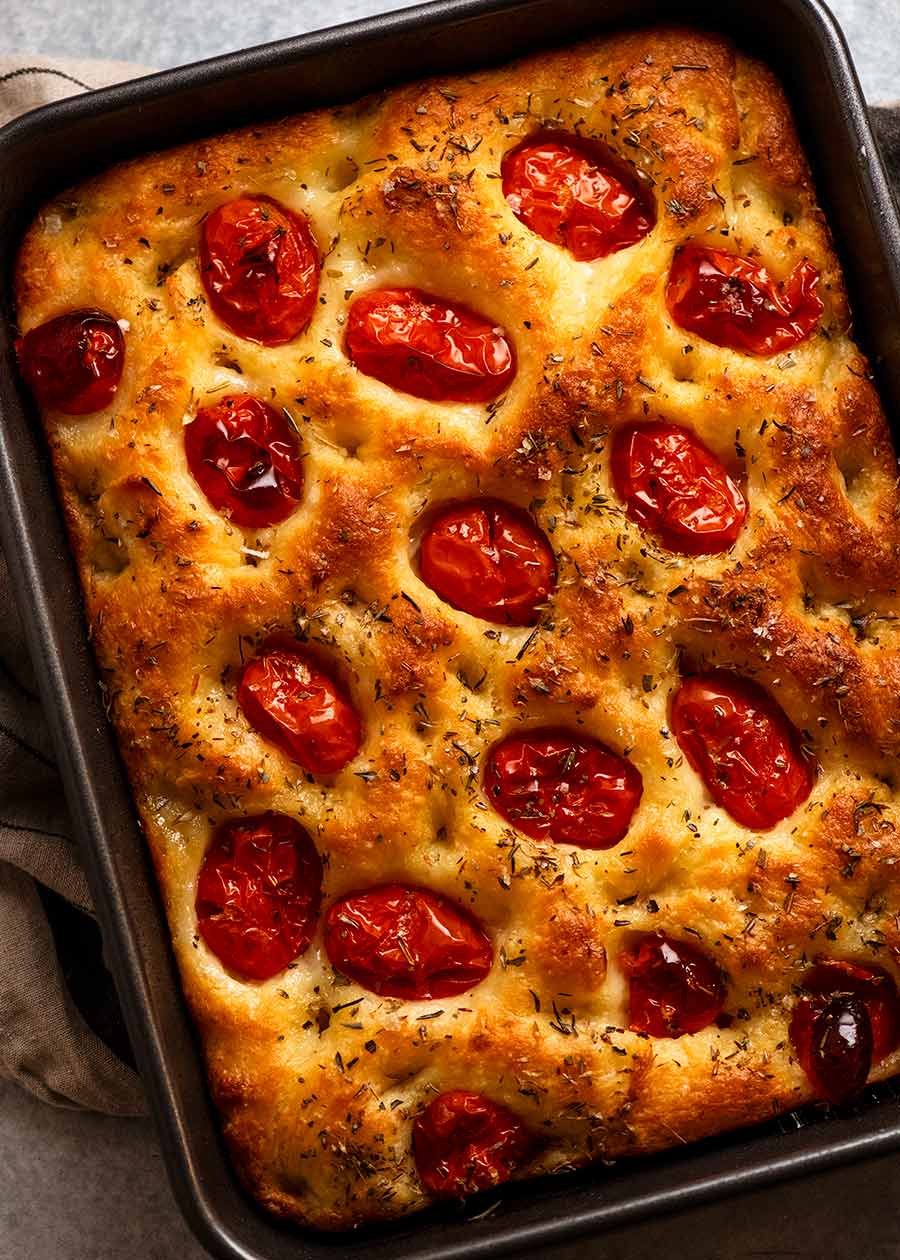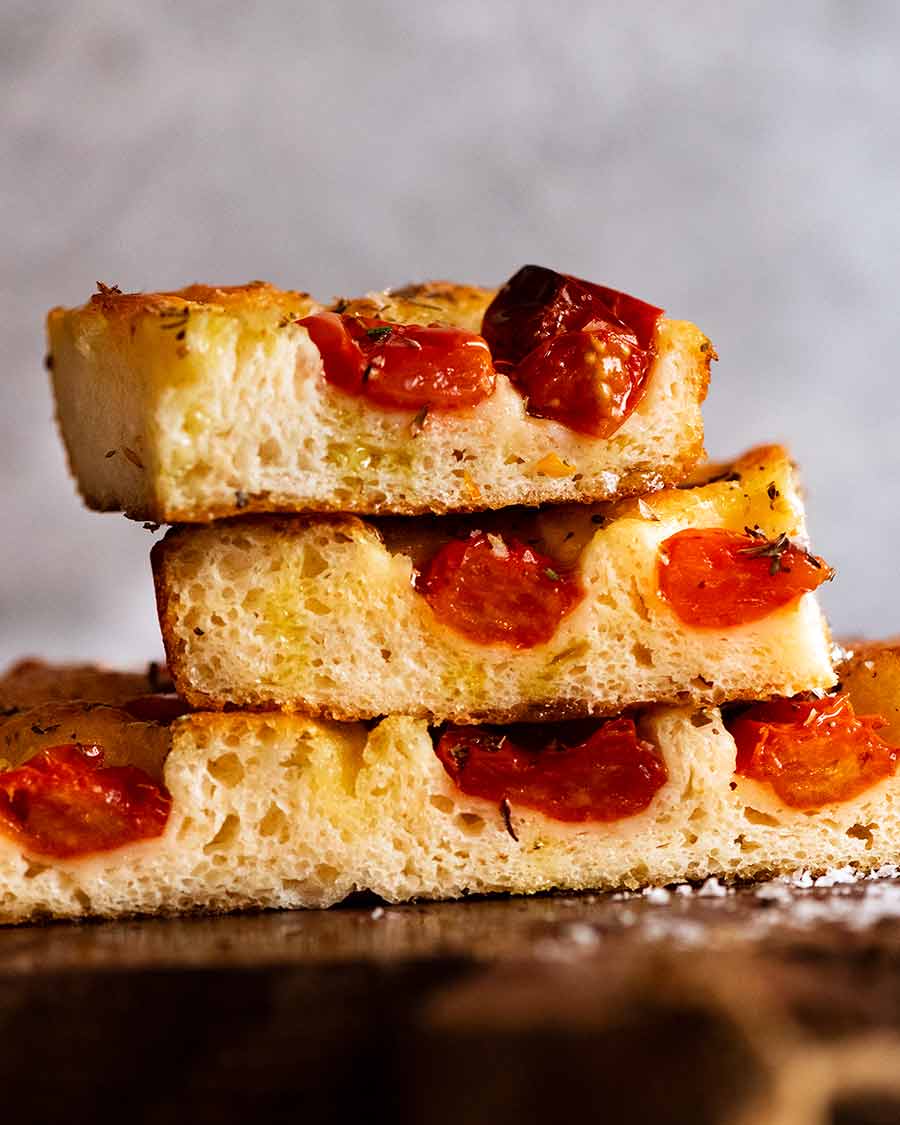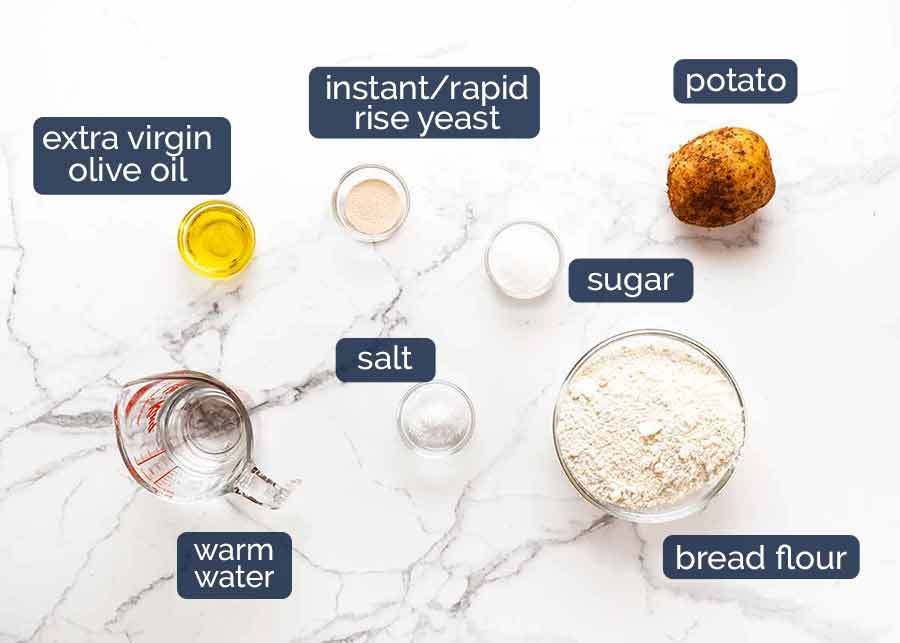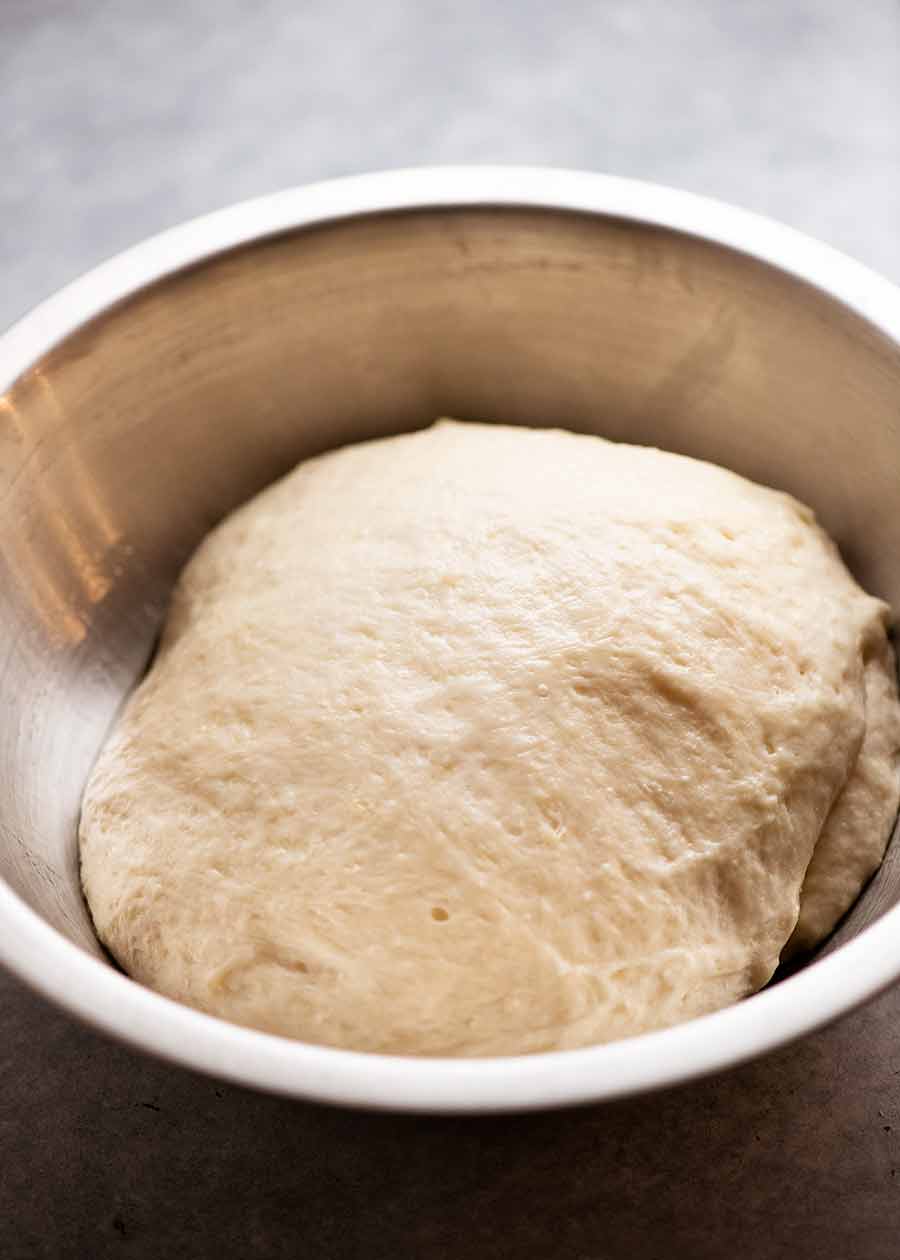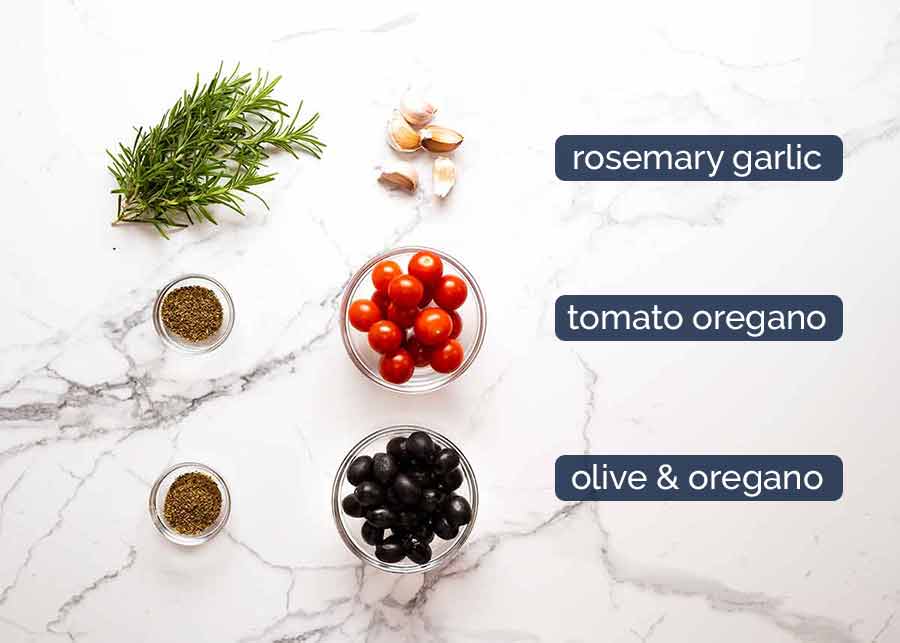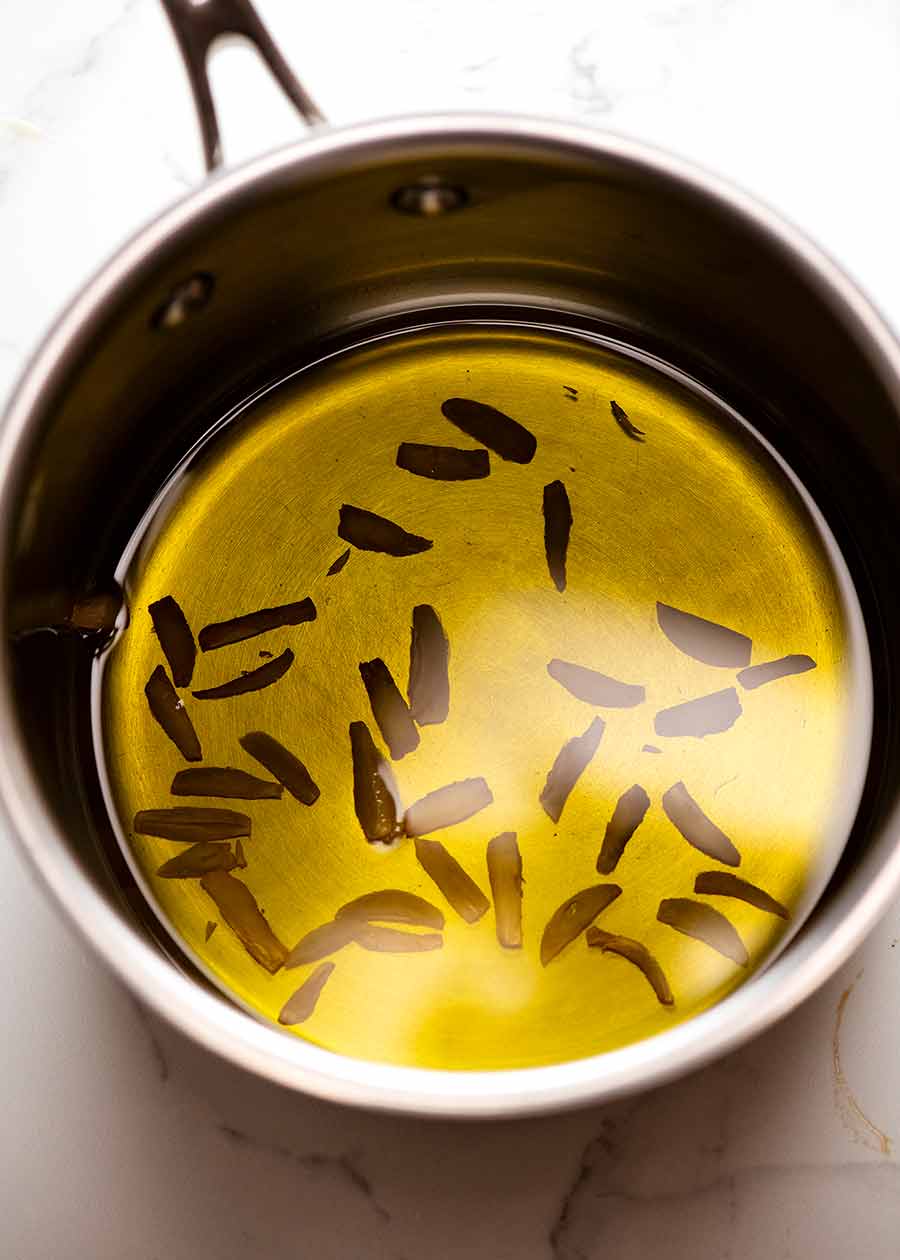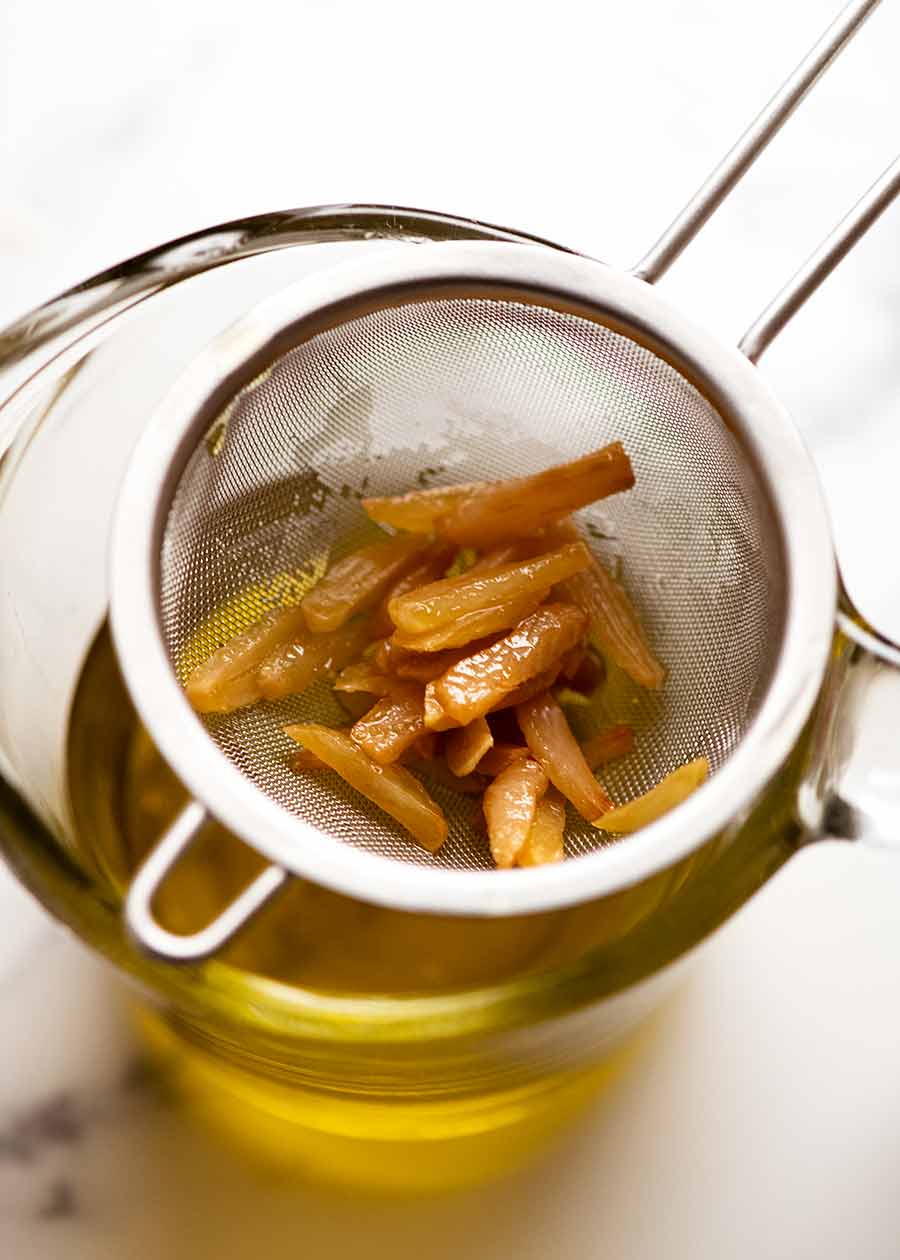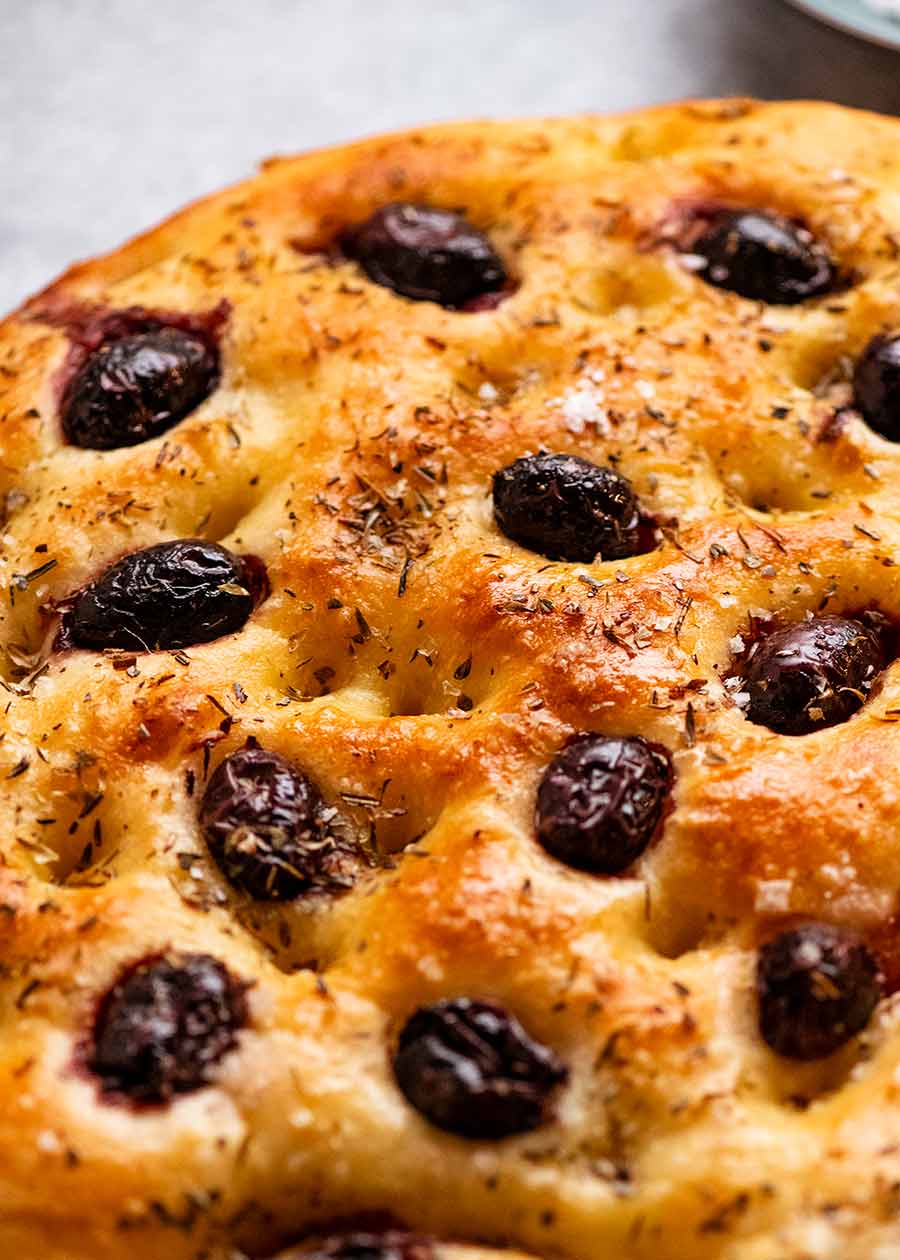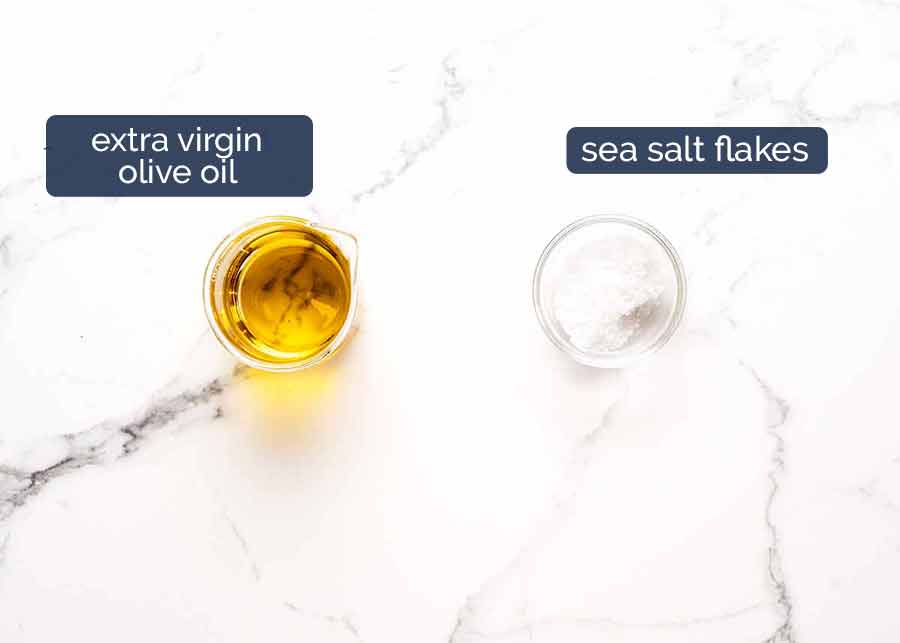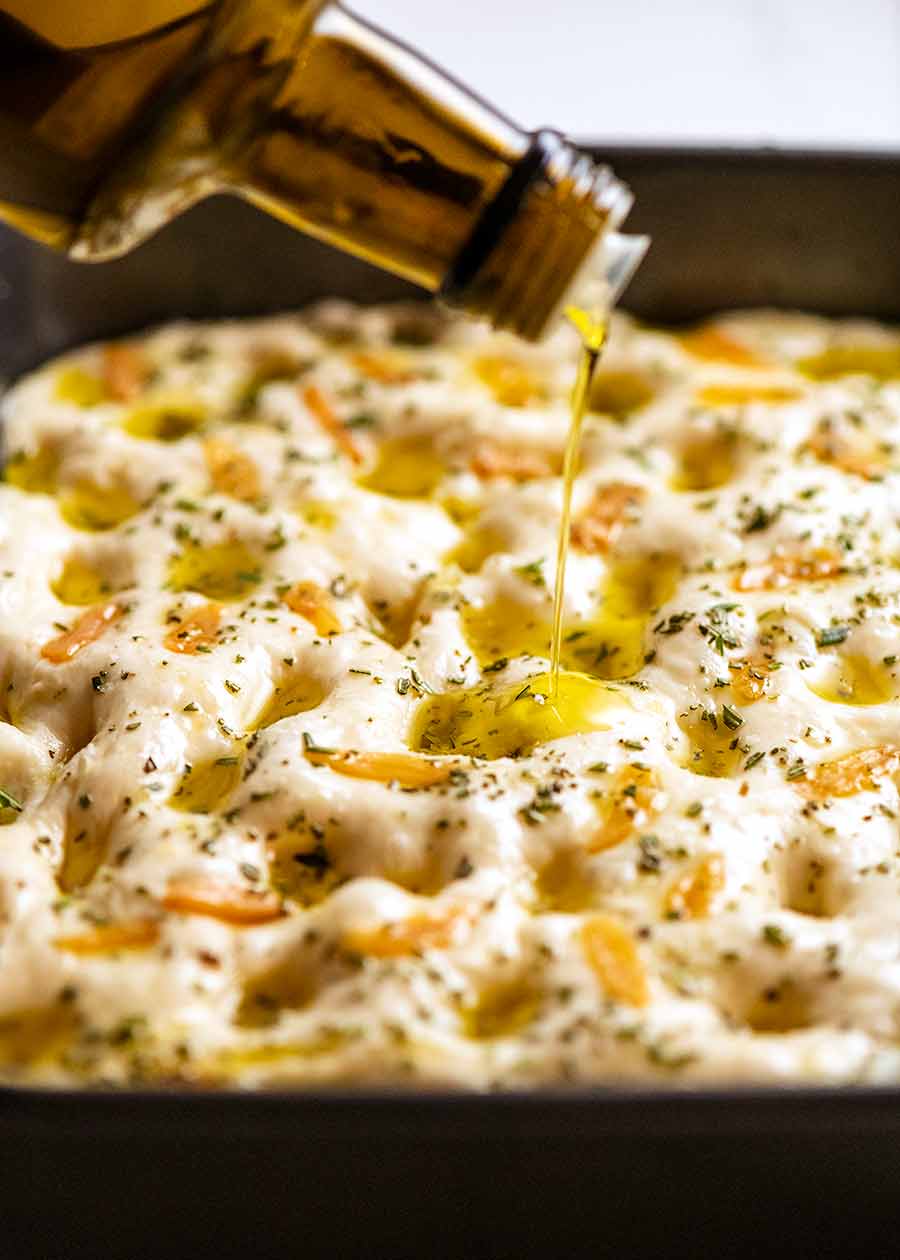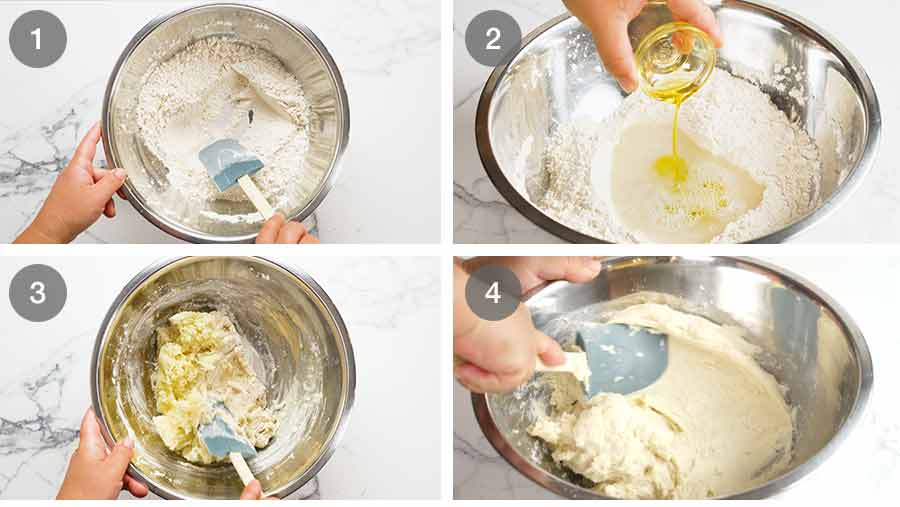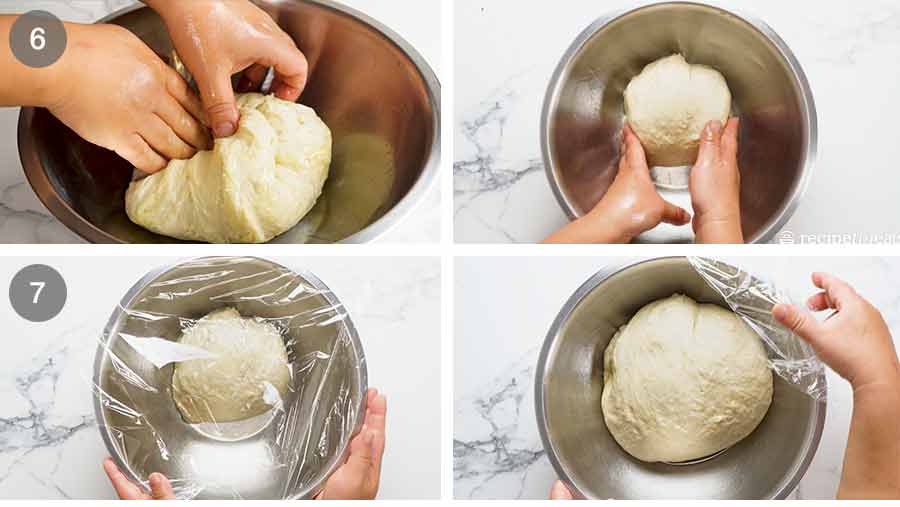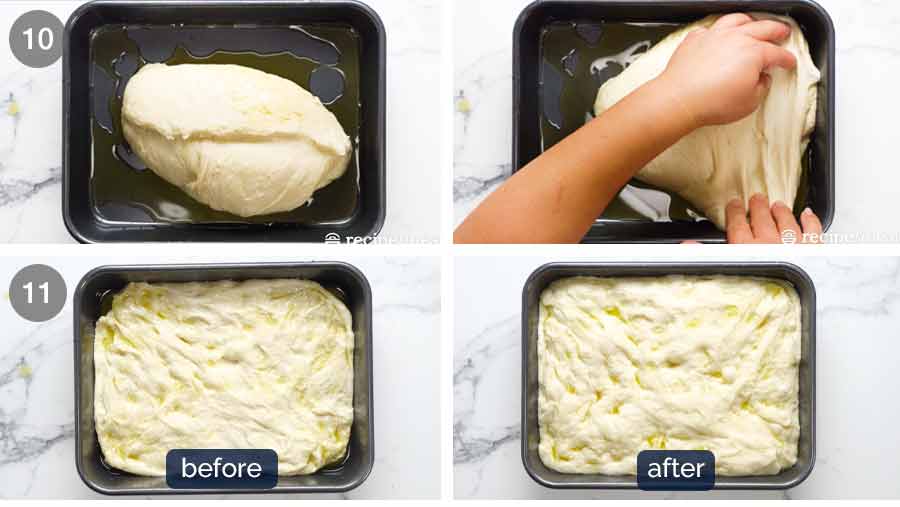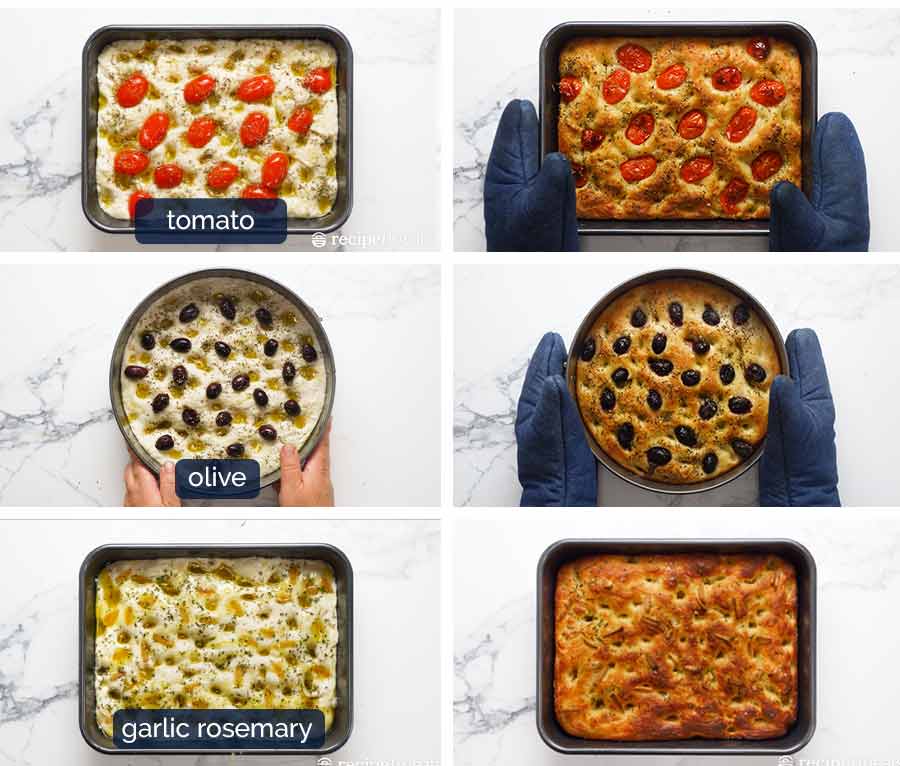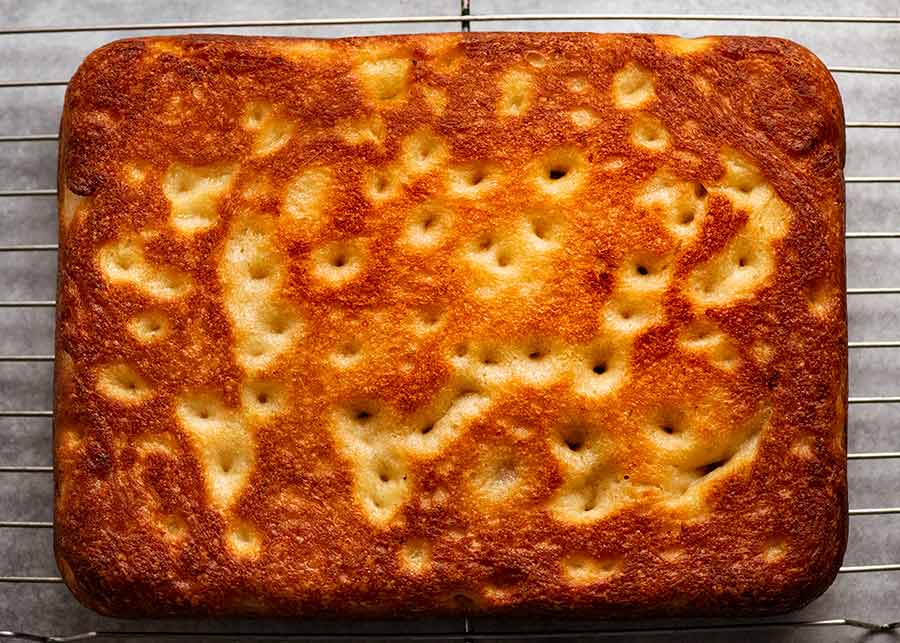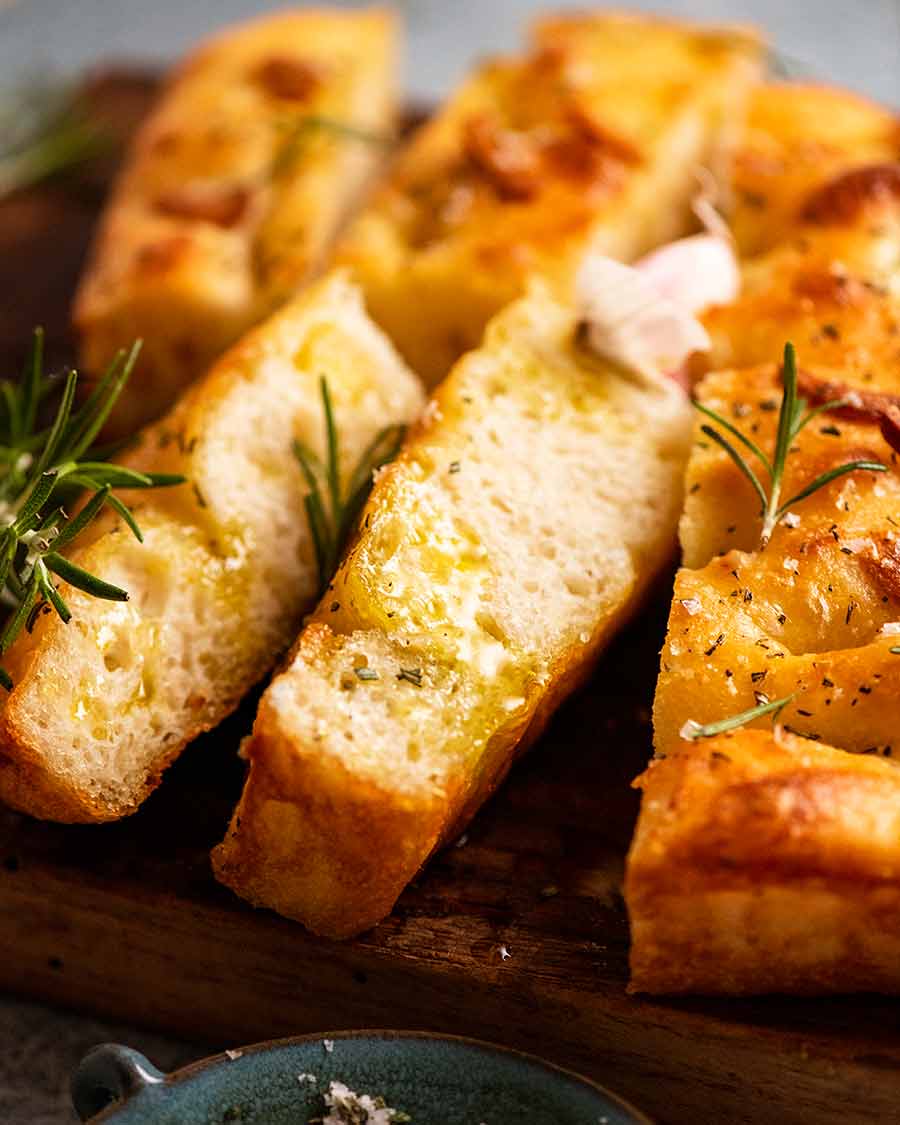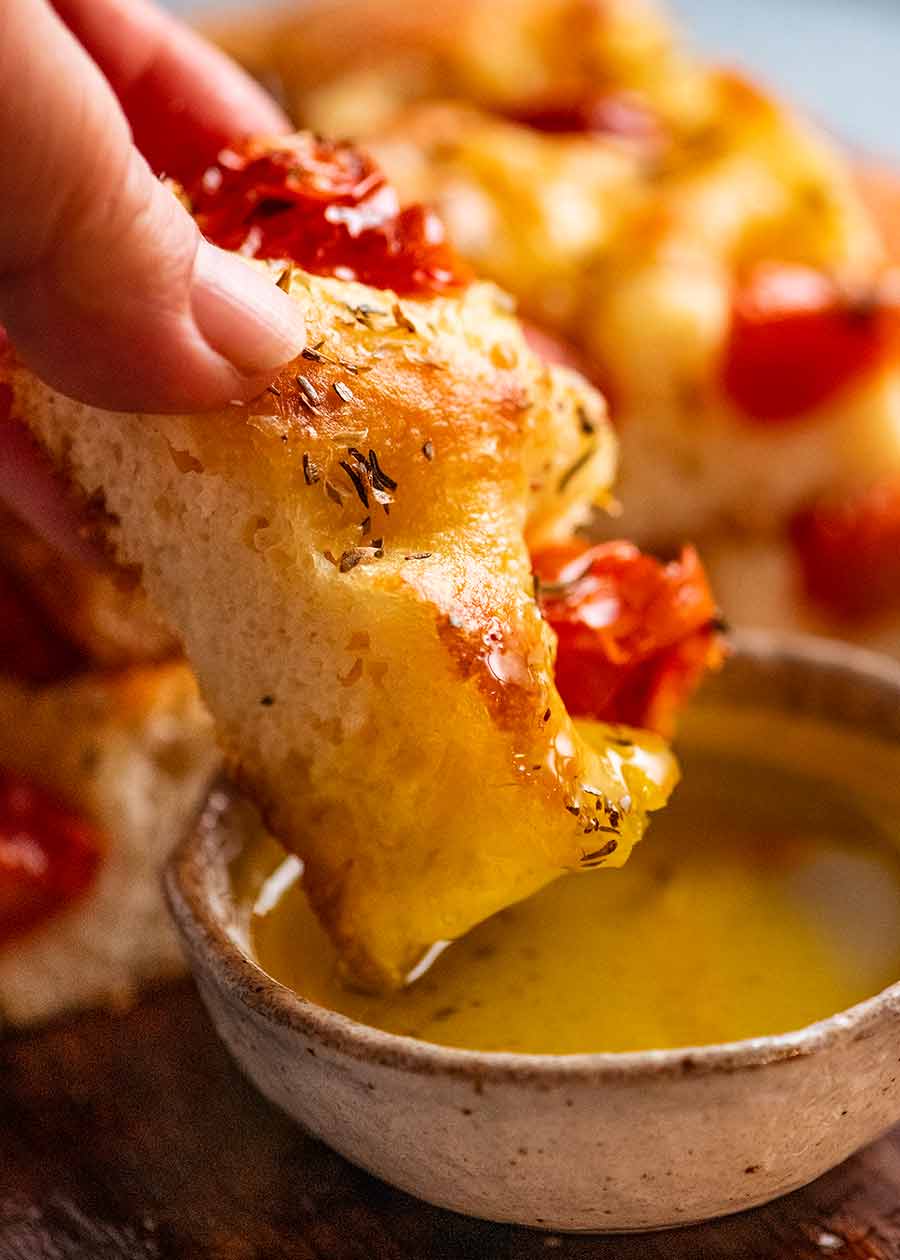Are you ready to be amazed how easy it is to make Focaccia? It’s virtually foolproof!
About this Focaccia recipe
Focaccia – that dimpled, flat–shaped Italian bread generously flavoured with olive oil – is found all over Italy and varies from place to place. I was torn with indecision about what type of focaccia to share, but eventually landed on this particularly well-known type called focaccia barese from Southern Italy. It’s from the city of Bari in Puglia, and this focaccia has an exceptionally fluffy interior and distinctive chew that comes from incorporating mashed potato into the dough. I love that the potato clearly distinguishes it from just another type of basic bread! The outside crusts meanwhile takes on a lovely golden crunch from baking in the pan thanks to an Italian “dash” (ie. more than just a teaspoon 😉) of olive oil. Together these qualities make a focaccia probably quite unlike any you’ve tried – so get set for a revelation! And yet, focaccia is also one of the easiest breads to make and is pretty much foolproof. Even a first-time baker could pull this off without breaking much of a sweat.
What makes this Focaccia recipe different?
For those of you who are interested in the nitty gritty of focaccia-making, here is some background information about focaccia barese which is the type of focaccia we are making here today!
High hydration – The dough for this recipe has particularly high hydration levels from the water and moisture in the potatoes. This is what gives the bread the springy, airy texture and open crumb; NO KNEAD – That’s right! This focaccia is a no-knead bread. The dough is simply too wet and sticky to knead, so we instead rely on a 3-proof method (more this below); Mashed potato – The unique inclusion of potato in the dough is what adds chew and body that you you don’t otherwise get with a straight flour focaccia. It also helps the crumb retain moisture; Lots of olive oil! Any focaccia recipe worth its salt (or oil?) will call for lashings of olive oil for flavour. In this focaccia, it also makes the crust deliciously crispy, almost like it’s been fried like deep pan pizza! Three dough proofs (rises) … YES! This step is essential. However because I’m worried this will be a turn-off for some, I’ve provided more details below to convince you it’s worth it – and it really is effortless.
Three dough proofs (rises)!
The recipe does require three proofs for the dough. But really, it is not a big deal! They are quick and the benefit is no messy kneading on the counter or in the stand-mixer. It takes just 1 hour 40 minutes for rising in total for the whole recipe, and just a minute or two to prepare the dough for each rise. We tried reducing it to 2 proofs but found the result wasn’t as good, and 1 proof was even more inferior. We need to rise the dough 3 times because because the dough is so wet we can’t knead it. Instead we let the bread “knead” itself through proofing. Proofing and folding several times before baking encourages gluten development and starch transformation to give the bread structure, as well as the time to develop flavour.
What you need for this Focaccia recipe
Here’s what you need for the focaccia bread. Toppings are shown separately below.
Toppings for Focaccia
I’m sharing three different toppings in this Focaccia recipe:
1. Rosemary and garlic Focaccia
This is a “plain”, classic version made using fresh rosemary and garlic – though there’s nothing “plain” about homemade focaccia! We’re using confit garlic which might sound fancy, but it’s just garlic that’s cooked in oil over a low heat until soft. Why do we have to bother, you ask? Because otherwise the garlic burns too much at the high oven temperature required to crisp the surface of the focaccia. Soft-cooking larger pieces helps protect the garlic. Nobody wants bitter black bits of garlic on their focaccia!
2. Tomato Focaccia
Made with cherry tomatoes, the trick with this is to squish them before pressing them firmly into the dough. This makes the tomatoes soften and stay semi-sunk in the dough, and allows the juices to seep into the crumb (the best part!). If you don’t squish, the cherry tomatoes kind of pop out and end up rolling around on the surface of the focaccia… and inevitably across the floor! 😂 I’ve used oregano as the herb but any dried mixed herbs or fresh rosemary will also work well.
3. Olive Focaccia
Kalamata olives (pitted) make an ideal choice here. I love how juicy and salty they are, and how the deep purple, almost black colour, really stands out against the golden brown surface. I’ve used oregano as the herb for this one too, but rosemary also works well (fresh, not dried).
Olive Oil and Sea Salt Flakes
In addition to the above toppings, all focaccia are finished with a generous drizzle of olive oil and a good pinch of sea salt flakes. It’s really worth using sea salt flakes for the surface, rather than cooking / kosher salt so they stay mostly whole as little salty pops rather than dissolving into the bread surface. Love the way the olive oil pools in the holes!
Focaccia recipe process steps
As mentioned above, this focaccia recipe calls for 3 dough rises which takes 1 hr 40 minutes in total. Read more about why it’s worth it and yields a better result – don’t skip it! Also, it’s worth noting that this is a no-knead bread. The dough is quite sticky, so it’s simply mixed with a spatula!
Part 1: Make the Dough (it’s no-knead!)
Part 2: First rise, 30 minutes
Part 3: Second rise, 30 minutes
Part 4: Prepare toppings and pan
Part 5: Dough into pan and third (final) rise
Part 6: Bake!
Part 5: Bake!
This is what the underside of the focaccia should look like – a deep golden brown, and beautifully crispy like it’s been fried. Which it practically has been – in all that delicious olive oil!! Shape it into a ball and cover with cling wrap; Once the dough is stretched to pretty much covers the base of the pan (Rise #3 below will make it fill the pan, don’t worry), smooth the surface, Lift the dough from each edge to release air bubbles trapped under the dough, while scooping up remaining oil in pan and smearing the underside to coat well; As for how to serve it? This bread is so rich, flavoursome and full of textures that it’s perfect as-is, straight out of the oven. But of course a little final drizzle of olive oil across the surface before slicing up into thick batons certainly won’t go astray … And though some might think we’re olive oiled-out, providing a saucerful for dunking isn’t such a bad idea either – think like an Italian! 🇮🇹 The focaccia will keep for a few days in an airtight container, but I do recommend reheating before serving. It will reinvigorate it to a near-freshly made state – warm, soft and fluffy on the inside, golden and crispy on the outside. Focaccia this delicious and varied can wear many outfits. It’s easily worthy of a party antipasto or appetiser spread. It also makes a great snack or picnic food. Sandwich bread? Toasted for breakfast? For sure. Or, serve it alongside just about everything and anything – especially stews, braises and soups. There is nothing Focaccia doesn’t work with (except, ok, maybe Asian food, you get a pass … !) and your imagination really is the limit with this Italian beauty! – Nagi x
Watch how to make it
Life of Dozer
I’M working! HE is not.
